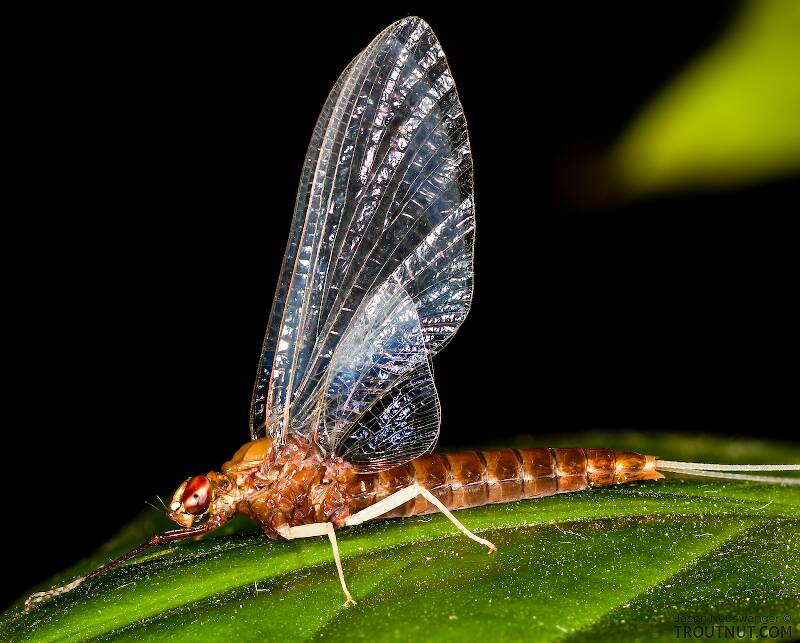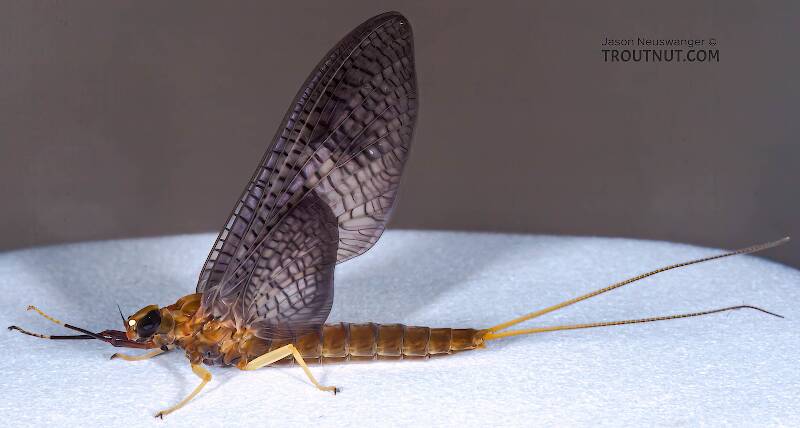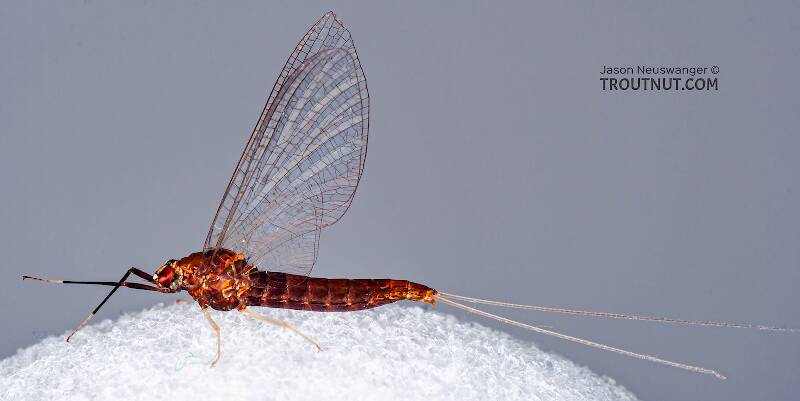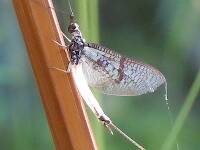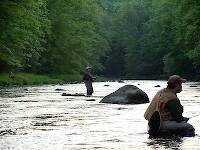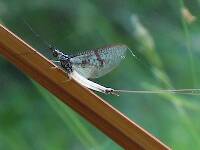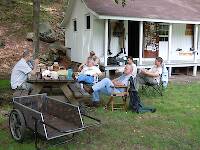
Blue-winged Olives
Baetis
Tiny Baetis mayflies are perhaps the most commonly encountered and imitated by anglers on all American trout streams due to their great abundance, widespread distribution, and trout-friendly emergence habits.
Featured on the forum

This specimen resembled several others of around the same size and perhaps the same species, which were pretty common in my February sample from the upper Yakima. Unfortunately, I misplaced the specimen before I could get it under a microscope for a definitive ID.

Troutnut is a project started in 2003 by salmonid ecologist Jason "Troutnut" Neuswanger to help anglers and
fly tyers unabashedly embrace the entomological side of the sport. Learn more about Troutnut or
support the project for an enhanced experience here.
This topic is about the Mayfly Genus Isonychia
Sporadic hatches are rarely as outstanding as those of Isonychia. On streams with good populations, they are reliably hatching in light numbers, here and there, for most of the evening through most of the mid- to late season.The spinners, and occasionally the duns, produce more concentrated action, but the real value of the Isonychia hatch is its duration and the size of the flies; large trout become ever watchful for them, even when they aren't emerging.
All the species of Isonychia are similar in appearance and behavior.
Example specimens
Jsell925 on Jul 17, 2007July 17th, 2007, 2:07 pm EDT
Penns is one of the few places where a #10 iso will nail em' all year long
GONZO on Jul 18, 2007July 18th, 2007, 4:43 am EDT
Justin,
Welcome to the site! Many find that the Delaware is also a great place to use the slate drake as a searching fly. The rainbows of the Big D seem to be especially fond of a big Iso imitation fished anytime from late spring into the fall. Personally, I'm a big fan of imitating the nymphs.
Welcome to the site! Many find that the Delaware is also a great place to use the slate drake as a searching fly. The rainbows of the Big D seem to be especially fond of a big Iso imitation fished anytime from late spring into the fall. Personally, I'm a big fan of imitating the nymphs.
Jimphoto on Sep 20, 2007September 20th, 2007, 1:08 pm EDT
I've found an emerger pattern to be successful on Penns. Apparently not all the nymphs crawl out on stones or the bank to hatch.
Konchu on Sep 22, 2007September 22nd, 2007, 12:24 pm EDT
Curious. Could it be that some get splashed back into the stream? Just a thought for discussion.
Shawnny3 on Sep 23, 2007September 23rd, 2007, 2:25 am EDT
...or could it be that the technical details of our flies don't matter all that much to the fish?
(I say this as much to draw Gonzo out of hiding as to make any serious point.)
-Shawn
(I say this as much to draw Gonzo out of hiding as to make any serious point.)
-Shawn
Jewelry-Quality Artistic Salmon Flies, by Shawn Davis
www.davisflydesigns.com
www.davisflydesigns.com
Quick Reply
Related Discussions
Topic
Replies
Last Reply
13
Mar 27, 2008
by Martinlf
by Martinlf
5
Jun 29, 2020
by Troutnut
by Troutnut


